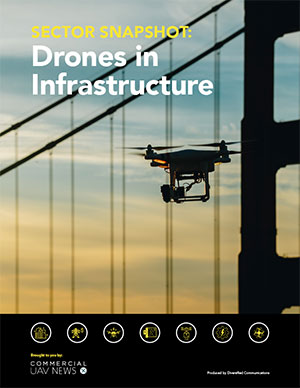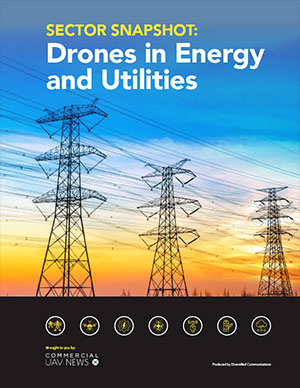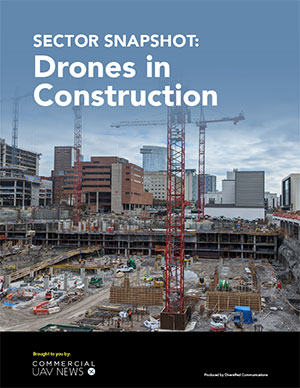Since the release of the BVLOS NPRM in July, the drone industry has been buzzing with excitement and anticipation for how this rule will propel drone operations in the U.S., but also apprehension around how it will affect drone operators. With changes to certification processes and a shift towards organizational responsibility, there are still many lingering questions. As the first major industry event since the announcement, Commercial UAV Expo 2025 served as the convergence point to discuss the proposed regulations.
In the first CUAV Expo session specifically covering the NPRM, industry leaders discussed topics including how to submit comments and what the commenting period entails, how different sectors will be affected, and what changes we can expect as a result of the rule.
The conversation continued in the session “Deep Dive Into Part 108” presented by Pilot Institute, led by Greg Reverdiau, co-founder of Pilot Institute and Vic Moss, owner of Moss Photography. Moss and Reverdiau broke the NPRM down to highlight the biggest roadblocks to getting a waiver and best practices for submitting comments.
To illustrate and summarize the lengthy document that is the NPRM, Reverdiau referenced Pilot Institute’s Guide to Part 108. This comprehensive guide breaks down what the new airspace will look like, provides clear visual examples of the rule in plain English, an explanation of new personnel requirements, and more. It covers major topics such as categories of population density, Remote ID, shielded operations, aircraft criteria, certificated vs. permitted operations, airworthiness and more.
No More Pilot in the Loop?
“Pilot in the loop” is an official term used by the FAA regarding autonomous flight operations and refers to the idea that there is always a human behind each flight. The NPRM proposed to eliminate this idea and instead turn flight responsibilities over to two new roles referred to as flight coordinator and flight operator. The former would be responsible for programming and planning the flights, while the latter would oversee the coordinators.
Despite the coordinator monitoring the flight, there is no pilot or person who has physical control over the aircraft. It will be the job of the coordinator to make sure the flight is going well and can intervene if problems arise.
.jpg.small.400x400.jpg)
“The FAA is very clear that at no time that person is going to actually operate the aircraft to physically to tell it what to do,” explained Reverdiau. Unsurprisingly, this statement garnered anxious looks from the crowd.
A proposal to keep part 107 with an added BVLOS Rating to it
Reverdiau and Moss shared their plans for commenting with the crowd, establishing their proposal to add a certificated BVLOS rating to existing Part 107 holders, considering all the criteria those holders have already met and recognizing the unnecessary steps of going through yet another certification process.
“What we're proposing is Part 107 with an added BVLOS rating on top of it, considering most people already have their Part 107 certificate,” said Reverdiau.
Reverdiau then asked for a show of hands for those who had an Operations Over People waiver or a night flight waiver. Almost everyone put their hand up.
The Do’s and Don’ts of Commenting
Reverdiau and Moss continually made the point that the industry’s voice is needed in this rule making, and that the current NPRM is meant to be revised based on the industry’s needs. That is where public commenting comes in.
Do:
- Comment on aspects you agree with to keep them in the rule.
- Make it personal. Look at how and why this rule will affect your business and explain that in your comment.
- Use clear and concise language.
- Comment as your organization or use your own name. The option to remain anonymous is there, but a comment with a name behind it will hold more weight.
- Attach a PDF to your comment if you feel you are approaching a character limit or need to include charts or graphs. Note that there is an attached document.
Don’t:
- Wait to submit your comments. Commenting closes on October 6, and if all comments come at the last minute, chances are the site will experience technical issues.
- Copy and paste a comment from another person even if you agree with it. Instead, make your own comments reiterating what you agree with and be specific as to why that’s something you agree with and use examples of how this will benefit your operations.
- Comment on the entire NPRM. Choose specific parts and submit a comment for each part.
- Comment anonymously. Regardless of whether the comment is positive or negative, a comment with a name behind it holds more value for the reviewer.
Public comments can be left on the Federal Register.
Moss wrapped up this explanation by stating how important it is to thank the FAA for including Part 108.5 in the rule, covering harassment of pilots themselves.
“What it says is that you may not interfere with, harass, or threaten somebody operating a drone under any circumstances.” Currently, rules exist to protect the drone itself, but not the pilot.
There are currently fewer than 250 comments posted, but Reverdiau and Moss believe there needs to be far more than that.
“We need to have 100,000 comments on this proposed rule from everyone who wants to fly the beyond line of sight,” stated Reverdiau.















Comments